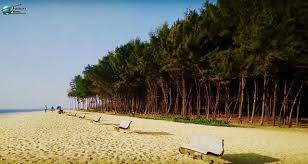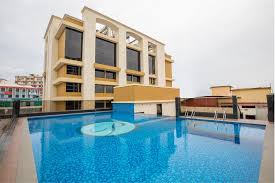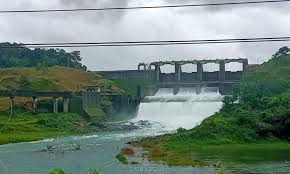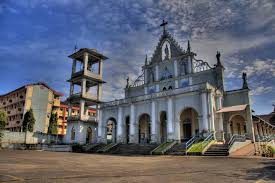St. Angelo Fort (Kannur Fort): A Testament to Colonial Power and History
Introduction:
Perched on the Arabian Sea coast in Kannur, Kerala, St. Angelo Fort, also known as Kannur Fort, is a stunning historical structure that bears witness to centuries of colonial rule and maritime history. Built by the Portuguese in 1505, this fort has seen the rise and fall of multiple colonial powers, including the Dutch and the British. With its formidable walls, bastions, and breathtaking views of the Arabian Sea, St. Angelo Fort is a remarkable reminder of Kannur’s strategic importance in the colonial era.
Historical Background:
St. Angelo Fort was constructed by Dom Francisco de Almeida, the first Portuguese Viceroy of India, shortly after his arrival in 1505. It was one of the earliest bastions of Portuguese power in India and was strategically located to control the vital trade routes along the Malabar coast. Over the centuries, the fort changed hands several times, reflecting the turbulent political landscape of colonial Kerala.
In 1663, the Dutch captured the fort from the Portuguese and made significant modifications to its structure, enhancing its defense mechanisms. Later, in the late 18th century, the fort was sold to the Arakkal Kingdom, the only Muslim royal family in Kerala. Eventually, the British took control of the fort in 1790 and used it as a military base until India gained independence in 1947.
Architecture of St. Angelo Fort:
The fort’s architecture is a blend of Portuguese, Dutch, and British influences, reflecting the various powers that controlled it over the centuries. The fort is triangular in shape and is surrounded by a moat, which adds to its defensive strength. Its thick, laterite walls rise majestically against the backdrop of the Arabian Sea, giving it an imposing appearance.
Key features of the fort include:
- Bastions and Watchtowers: The fort has several bastions and watchtowers that offer panoramic views of the Arabian Sea and the surrounding landscape. These towers were crucial for monitoring enemy ships and defending the coastline.
- Cannon Emplacements: The fort is equipped with old cannon emplacements, a reminder of the military strategies employed by the colonial powers. Some of the cannons still remain on display, pointing out toward the sea.
- Underground Tunnels: The fort is believed to have secret underground tunnels that connect it to other nearby forts and structures. These tunnels were likely used to transport supplies and as escape routes in times of siege.
- Chapel and Buildings: Within the fort, there are remnants of old Portuguese and Dutch structures, including a chapel and administrative buildings. These structures give a glimpse into the life of the colonial rulers who once occupied the fort.
Strategic Location:
St. Angelo Fort’s location is one of its greatest assets. It overlooks the Moppila Bay, a natural fishing harbor, and offers a commanding view of the Arabian Sea. The fort’s strategic position made it an ideal point for monitoring maritime trade and naval movements along the Malabar Coast. Today, visitors can enjoy spectacular views of the sea, especially at sunset, when the fort’s walls are bathed in the golden glow of the setting sun.
Role in Colonial Conflicts:
Throughout its history, St. Angelo Fort was at the center of several important battles and conflicts. The Portuguese, Dutch, and British used the fort as a base for expanding their influence in the region and controlling the lucrative spice trade. The fort also played a significant role in defending against attacks by local rulers, including the Zamorin of Calicut and the Arakkal Kingdom.
During the British period, the fort was used as a base for suppressing local uprisings and maintaining control over the rebellious regions of northern Kerala. The fort’s strategic importance declined after Indian independence, but its historical significance remains undiminished.
St. Angelo Fort Today:
Today, St. Angelo Fort is a protected monument under the care of the Archaeological Survey of India (ASI). It is one of the most well-preserved forts in Kerala, attracting history enthusiasts, tourists, and locals alike. The fort’s well-maintained grounds, ancient structures, and stunning sea views make it a popular destination for both leisure and education.
Visitors to the fort can explore its bastions, ramparts, and tunnels, while also learning about its rich colonial history through information boards and exhibits. The fort also serves as a venue for cultural events, including historical reenactments and art exhibitions, which bring its history to life.
Attractions Near St. Angelo Fort:
- Moppila Bay: Located just below the fort, Moppila Bay is a natural harbor that has been used by fishermen for centuries. Visitors can watch the local fishing boats in action or take a boat ride to explore the bay.
- Arakkal Museum: Situated just a few kilometers from the fort, this museum is dedicated to the history of the Arakkal royal family, the only Muslim dynasty in Kerala. The museum offers a fascinating insight into the region’s unique cultural and political history.
- Kannur Lighthouse: Another nearby attraction is the Kannur Lighthouse, located on a hill just a short drive from the fort. Visitors can climb to the top of the lighthouse for breathtaking views of the Arabian Sea and the surrounding coastline.
- Payyambalam Beach: One of Kannur’s most famous beaches, Payyambalam Beach is known for its scenic beauty and tranquil atmosphere. It’s a great spot to relax after exploring the historical sites of Kannur.
Best Time to Visit:
The best time to visit St. Angelo Fort is between October and March, when the weather is pleasant and suitable for sightseeing. During this period, the coastal breeze makes for a comfortable visit, and the fort’s proximity to the sea adds to the charm of exploring its grounds. The monsoon season (June to September) brings heavy rains, which might hinder travel but also enhances the lush greenery around the fort.
Conclusion:
St. Angelo Fort stands as a proud symbol of Kerala’s colonial history and its strategic maritime importance. With its blend of Portuguese, Dutch, and British architecture, the fort offers a unique window into the region’s past. Visitors can not only explore its formidable walls and bastions but also enjoy the stunning coastal views and learn about the complex history of the colonial powers that shaped Kerala’s destiny. Whether you are a history buff or a casual traveler, St. Angelo Fort is a must-visit destination that showcases the enduring legacy of Kerala’s rich and varied heritage.






















